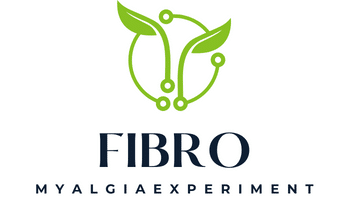In the ever-evolving world of agriculture, smart farming is no longer an unfamiliar term. It refers to the integration of modern technology and farming practices to increase the quantity and quality of agricultural products. The UK, a leader in the field, has embraced these advancements and is witnessing a significant shift in farming operations.
This article will delve into the latest developments in smart farming in the UK, including the use of artificial intelligence, data analytics, drones, robotics, and the Internet of Things. It provides an in-depth look into how these technologies are transforming farming and contributing to a more sustainable and efficient agricultural sector.
A lire en complément : What Are the Best Email Marketing Tactics for a UK Sustainable Fashion Brand?
The Rise of Artificial Intelligence in Farming
The agriculture sector is increasingly leveraging the power of artificial intelligence (AI) to optimise farming processes. AI applications in farming are extensive and include predictive analytics, crop and soil monitoring, and automated irrigation systems.
The advent of AI has allowed farmers to predict outcomes through data analysis, effectively reducing the unpredictability of agricultural operations. By processing vast amounts of data, AI can forecast weather patterns, disease outbreaks, and pest invasions, allowing farmers to take preventive measures.
Sujet a lire : What Are the Key Elements for Creating a Data-Driven Culture in UK SMEs?
AI-driven crop and soil monitoring systems are another important development. These systems gather data on plant health, soil condition, and weather data, creating a comprehensive understanding of the field conditions. Using this data, farmers can make informed decisions on when to plant, irrigate, or harvest crops.
Finally, automated irrigation systems use AI to monitor soil moisture levels and automatically adjust water usage. This not only conserves water but also ensures optimal crop growth.
Data Analytics: Turning Raw Data into Actionable Insights
Data analytics is another key development in smart farming. It involves the analysis of raw data to draw insights that inform decision-making processes in farming.
Farmers generate vast amounts of data from various sources such as weather stations, soil sensors, and drones. However, without proper analysis, this data remains underutilised. This is where data analytics comes in. By processing and interpreting this data, farmers can draw valuable insights on crop health, soil conditions, and weather patterns to improve farm management and yield.
Furthermore, data analytics can identify patterns and trends, enabling predictive farming. For instance, by analysing past weather trends, farmers can predict future weather conditions and plan their farming activities accordingly.
Drones: The Eye in the Sky
Drones, or Unmanned Aerial Vehicles (UAVs), are becoming an indispensable tool in smart farming. They offer a bird’s eye view of the farm, enabling farmers to monitor their crops more effectively and efficiently.
Drones fitted with multispectral sensors can gather data on plant health, soil condition, and moisture levels. By analysing this data, farmers can identify unhealthy plants and areas of the farm that require more attention.
Furthermore, drones offer a cost-effective and efficient way of applying pesticides and fertilisers. By pinpointing the exact areas that require treatment, drones reduce the amount of chemicals used, thereby lowering costs and minimising environmental impact.
Advancements in Robotics
Robotics is another field making significant strides in smart farming. Robots are being used for a variety of tasks such as sowing, weeding, harvesting, and packing.
Sowing robots, for instance, are capable of planting seeds with precision, reducing wastage and increasing efficiency. Weeding robots, on the other hand, can identify and remove weeds, significantly reducing the need for chemical herbicides.
In addition to field work, robots are also being used in packing and sorting operations. These robots can sort fruits and vegetables based on size, colour, and quality, improving the speed and accuracy of the sorting process.
The Internet of Things (IoT) and its Impact
The Internet of Things (IoT) is a network of physical objects – ‘things’ – that are connected to the internet. This technology allows data to be collected, shared, and analysed in real-time, leading to improved decision-making in farming.
In agriculture, IoT devices such as sensors and smart meters can monitor various factors such as soil moisture, temperature, and nutrient levels. This data is sent to a central system where it is analysed and used to inform farming decisions.
Moreover, IoT devices can be used to automate farming processes. For instance, an IoT-connected irrigation system can automatically water crops when the soil moisture levels drop below a certain point.
The advent of IoT has led to the development of ‘smart farms’ – farms where all operations are monitored and controlled digitally. This not only increases efficiency but also reduces the reliance on manual labour, making farming more sustainable in the long run.
Emergence of Precision Livestock Farming
Precision livestock farming (PLF) is a budding field in smart farming that involves the use of technology to improve the management of livestock. This approach aims to optimise animal welfare and increase the efficiency of production.
With the help of PLF technologies, farmers can monitor the health and behaviour of their animals continuously and in real-time. For instance, wearable devices such as smart collars and ear tags can track the vital signs, movements, and behaviours of livestock. This enables farmers to identify any signs of illness or distress early, allowing for timely treatment and preventing the spread of diseases within the herd.
Automated feeding and milking systems are another advancement in PLF. These systems not only save labour but also allow for individualised feeding and milking, taking into account each animal’s nutritional needs and milk production levels. This results in healthier animals and higher-quality produce.
Furthermore, PLF involves the use of data analytics to predict outcomes and make informed decisions. By analysing data on animal health, growth, and productivity, farmers can optimise their operations, resulting in increased efficiency and profitability.
The Future of Smart Farming in the UK
Smart farming is set to revolutionise UK agriculture. The advancements discussed above not only make farming more efficient but also more sustainable. By harnessing the power of AI, data analytics, drones, robotics, IoT, and precision livestock farming, farmers can produce more food using fewer resources, reducing the environmental impact of agriculture.
Moreover, these technologies can help tackle some of the biggest challenges facing UK agriculture, such as labour shortages, changing weather patterns, and increasing demand for food. By automating farming processes, technologies like AI and robotics can alleviate the labour shortage issue. Meanwhile, data analytics and IoT can help farmers adapt to changing weather patterns and increase their resilience to climate change.
However, the widespread adoption of smart farming in the UK is not without its hurdles. Key challenges include the high cost of technology, lack of digital skills among farmers, and concerns about data privacy and security. To overcome these barriers, government support and investment in research and development are crucial. Furthermore, education and training programs can help equip farmers with the necessary digital skills and knowledge.
In conclusion, while challenges remain, the future of smart farming in the UK looks promising. With continual advancements in technology and increasing support from the government, UK agriculture is well on its way to becoming smarter, more efficient, and more sustainable.






